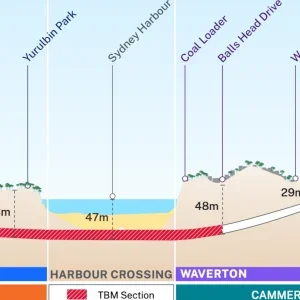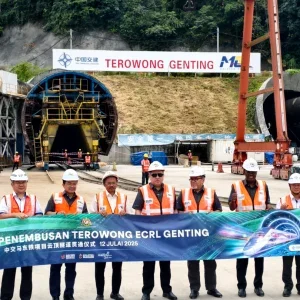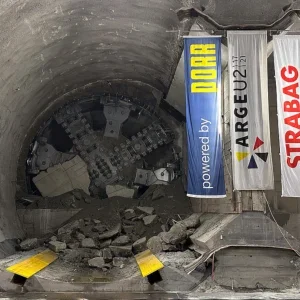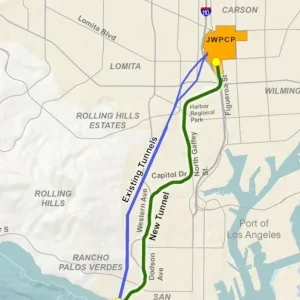…Benjamin Lafarga of Mott MacDonald, London.
Lafarga’s winning presentation, entitled ‘Implementation of parametric design in the tunnelling industry: HS2 Euston Station ventilation and substation enabling works’ gave a detailed insight into the various elements of the HS2 project at Euston. Lafarga highlighted his role in developing a new design concept that sought to speed-up the modelling process and reduce abortive work; retain ownership of the model in engineering hands to increase reliability and quality of the final product; and create an auditable and trackable single source of truth.
Starting with the use of digital tools in design, Lafarga went on to give a brief introduction to parametric modelling and explained how the design methodology was applied to the project, concluding with lessons learnt and further steps. Overall, the presentation highlighted the importance of digital tools in the design process and how they can aid the tunnelling sector toward better delivery and performance.
In the second presentation, Cate Anthony (Dr Sauer & Partners, London), discussed the ‘Bank Station Upgrade: the design and construction of pile interception load transfer structures at 6-8 Princes Street’. Anthony highlighted her major role in routing a tunnel through a forest of piles; how some had to be cut, re-supported temporarily then incorporated into a permanent, reinforced concrete arched transfer structure which would envelope the tunnel.
Christina Trigle (BAM Nuttall, London) presented a paper entitled ‘Thames Tideway: the impact of Covid-19 on TBM tunnelling for the Thames Tideway Tunnel’. Trigle outlined her role as section engineer on Thames Tideway West in creating a series of social distancing measures that would ensure safe working on TBM Rachel. But also, the measures instigated to avoid excessive settlement and movement of the TBM while stationary during the stoppage – including face pressure and ring-build pressure monitoring.
Summing up the evening, the judges said that they enjoyed all three very high-quality presentations, but it had been “incredibly hard” to single-out a winner. However, they felt Lafarga’s presentation had the strongest technical offering and potentially the greatest interest for the tunnelling industry. “He provided the strongest total offering, good technical understanding coupled with a very clear explanation of the benefits of parametric design, presented in such a way that the results were readily understood.”
BTS Chair Kate Cooksey thanked the three finalists and the judges and said she looked forward to presenting Lafarga with his prize in person, in London, when public health conditions allow.
The judging panel for the competition comprised:
- Anita Wu, Associate, London Bridge Associates
- Chris Pressdee, Ground Engineering Research Manager, CIRIA
- David Brock, Senior Tunnel Engineer, Atkins.
During the interval, created to allow the judges to deliberate, the audience was treated to two tunnel-related folk songs composed and sung by Nancy Kerr. They form part of a suite commissioned specially by the British Tunnelling Society to celebrate its 50th Anniversary.
The evening’s proceedings – presentations, judges’ deliberations and folk songs – are available for viewing at: https://www.youtube.com/watch?v=9J3ebJtvIeo
The Harding Prize competition is named in honour of Sir Harold Harding, the founding Chairman of the BTS. The competition is open to young engineers aged 33 or under. Original papers submitted must address aspects of tunnelling which are considered of interest to the tunnelling industry.







